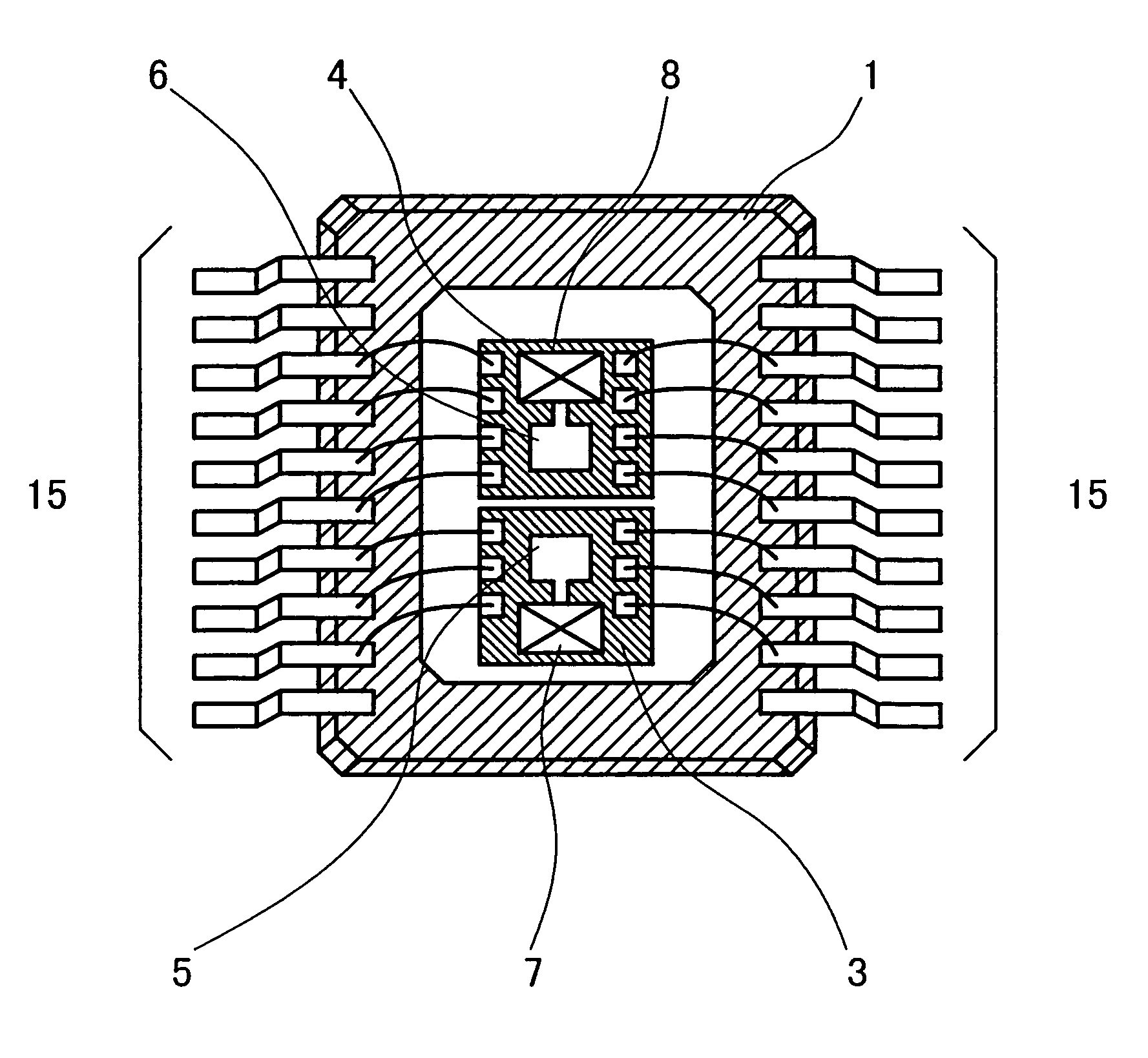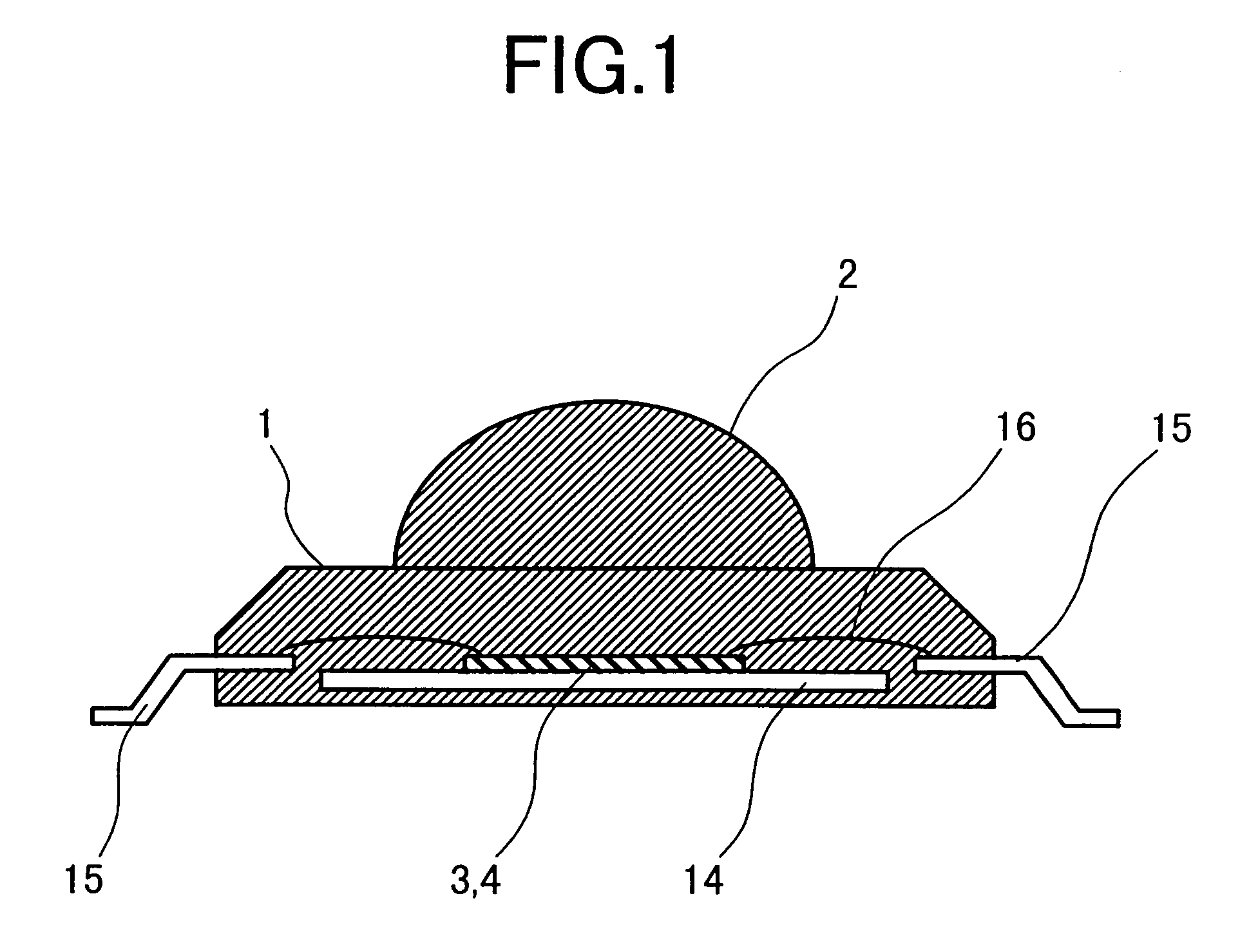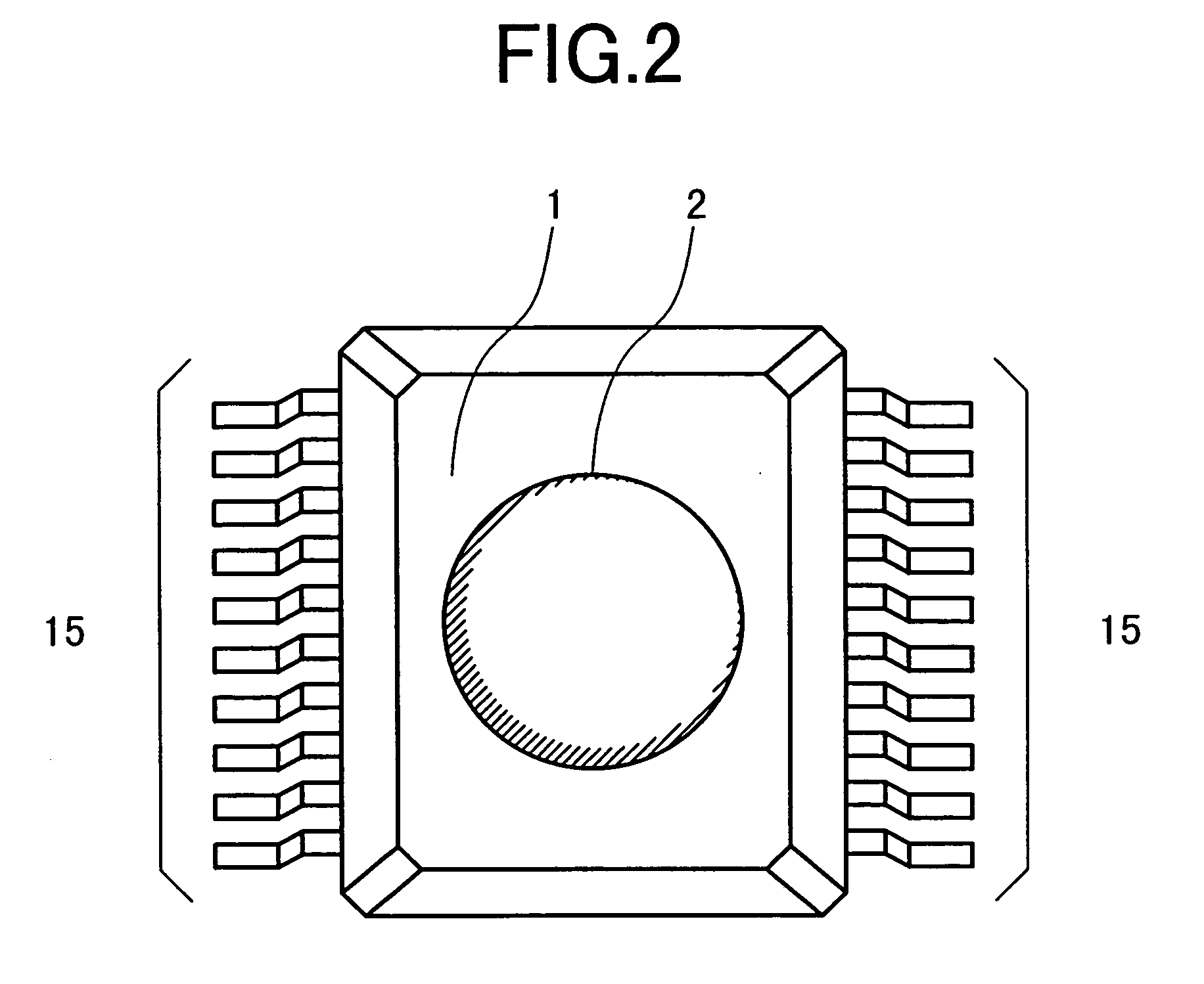Radar sensor
a technology of radar and sensor body, applied in the field of radar sensors, can solve the problems of increasing the size of the module, not being able to meet the needs of module cost reduction, and still more manufacturing processes, so as to reduce the area, reduce the cost, and reduce the manufacturing cost
- Summary
- Abstract
- Description
- Claims
- Application Information
AI Technical Summary
Benefits of technology
Problems solved by technology
Method used
Image
Examples
Embodiment Construction
[0030]The preferred embodiments of the invention will be described with reference to the accompanying drawings.
[0031]FIG. 1 through FIG. 3 illustrates the first embodiment of the radar sensor according to the invention. FIG. 1 is a sectional view of the radar sensor; FIG. 2 is a general plan view of the radar sensor; and FIG. 3 is a plan view without the upper part of a package. In this embodiment, a transmission IC3 and a reception IC4 are mounted inside one resin package 1. The transmission IC3 is, as illustrated in FIG. 3, a one-chip MMIC formed on one semiconductor substrate, which includes an active circuit 7 for transmission and a transmission antenna 5. In the same manner, the reception IC4 is a one-chip MMIC formed on one semiconductor substrate, which includes an active circuit 8 for reception and a reception antenna 6. The transmission IC3 and reception IC4 are secured on a base plate 14. The IC3 and IC4 are connected to circuits outside the module through electrode pads o...
PUM
 Login to View More
Login to View More Abstract
Description
Claims
Application Information
 Login to View More
Login to View More - R&D
- Intellectual Property
- Life Sciences
- Materials
- Tech Scout
- Unparalleled Data Quality
- Higher Quality Content
- 60% Fewer Hallucinations
Browse by: Latest US Patents, China's latest patents, Technical Efficacy Thesaurus, Application Domain, Technology Topic, Popular Technical Reports.
© 2025 PatSnap. All rights reserved.Legal|Privacy policy|Modern Slavery Act Transparency Statement|Sitemap|About US| Contact US: help@patsnap.com



